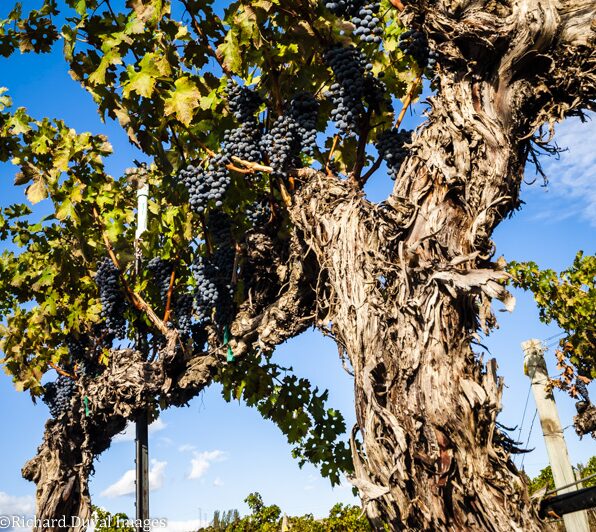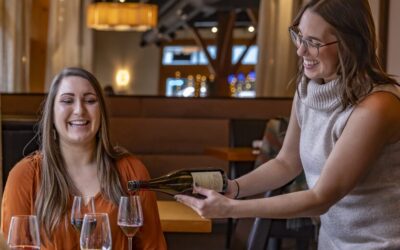Focus on WA State – Old Vine Registry
Viticulture, or the cultivation of grapevines, is an industry that’s constantly evolving. However, the most valuable and impressive vines are those that have withstood the test of time, surviving for decades. The Old Vine Registry is a volunteer managed project which aims to celebrate these seasoned crops. This organization believes that old vines “carry the secrets of survival” and have much to teach us about sustainability. The website points out that old vines are often more resilient than their younger counterparts. They also need less irrigation, and have adapted to resist damage from pests.
Washington State is famous for its love of wine, ranking second only to California in terms of production. Therefore, it should come as no surprise that the State is home to some truly magnificent old vines. Continue reading to learn about the most historically significant vines in Washington, as featured in the Old Vine Registry.
- Bainbridge Vineyards
On beautiful Bainbridge Island in the Puget sound sits a storied vineyard, with vines up to 44 years old. The farm where the vineyard is planted dates back to 1928. It was established by a Japanese family who would later go on to survive internment during WWII. In 1978, this family sold the farm to Gerard and Jo Ann Bentryn, the founders of Bainbridge Vineyards. The Bentryns were inspired to start their wine business after traveling the globe and sampling wine all over the world. They chose west Washington for its similarities to the growing climates in France and Germany.
Some of the oldest grape varieties you will find at this site are Müller Thurgau, Madeleine Angevine, and Siegerrebe. These vines are own-rooted, which means they have not been grafted onto rootstock. Grafting is a common practice that helps with sustainability, but can potentially compromise flavor. Presently, Betsey Wittick owns the winery and vineyard. While tours of the vineyard are not available, guests can try the premium wines in the outdoor tasting room.
- Leonetti Estate
In 1974, Gary and Nancy Figgins put down the roots of their first vineyard. This marked the beginning of Leonetti Cellar, the first commercial winery in Washington’s Walla Walla Valley. The original vineyard is located on the Leonetti farm, which dates all the way back to 1906. The Reisling, Cabernet Sauvignon, and Merlot crops that started the vineyard are still alive, at over 40 years old. The vines are own-rooted, making their longevity even more notable.
Leonetti Cellar is still celebrated as a leading pioneer in the Walla Walla Valley’s thriving wine industry. The company is highly exclusive, and does not have a public tasting room, or offer vineyard tours. However, anyone interested in trying this prodigious wine can join a waiting list on the winery’s website, where they can order bottles online.
- Above The Curve Vineyard
Mike and Cindy Jacobson, founders of Above the Curve vineyard, didn’t pursue their passion for wine until after they retired from their lifelong teaching careers. Despite their late start, their endeavor was a resounding success. The own-rooted Merlot vines on their land are still thriving to this day, at the ripe old age of 44. So are their 41 year old Semillon vines. In the early days, Above the Curve sourced their vines to other local wineries. Now, with the help of their business partners Tim Schwanke and Patti Ruppert, they are bottling and selling their own vintage wines.
Above the Curve is located in the Yakima Valley, the first ever viticultural region in Washington state. Guests are welcome to walk through the vineyards, and a tasting room is available for sampling and purchasing wine.
- Kiona Estate
The first planting in what is now the famous Red Mountain AVA of WA state was Kiona Estate. John Williams and Jim Holmes, engineers by trade planted the first vines in 1975 with the help of John’s son Scott Williams. Before they could do that, they had to drill for water to a whopping 550 feet in this arid desert climate near Benton City, WA. The first varieties were Cabernet, Resiling, and Chardonnay. In 1976, more vines were added, Lemberger, Chenin and Merlot and Kiona released the first Lemberger in the United States and became the largest producer of the varietal in the western hemisphere. This was the second planting and became Ciel du Cheval.
Originally locals thought John was crazy but now Red Mountain is the premier grape growing region in North America, producing some of the most famous wines in the world. Three generations of the family continue to work this land and produce amazing grapes. In addition to bottling their own wines, Kiona grows grapes in this desert mountain region for other famous wineries such as Betz, Syncline, and Fidélitas.
- Ranch at the End of the Road
The third planting on Red Mountain, also owned by Scott Williams of Kiona Estates, is located exactly at the end of Sunset Rd. The site is known for producing very dense and concentrated fruit. The ranch is the primary location for Kiona’s Syrah, but it also has smaller plantings of top-tier Cabernet Sauvignon and Sangiovese that have earned great respect throughout the region and the world. Added after Scott and his wife Vicky bought the property at the base of Red Mountain and made it their home. The vines that date back to be included in the registry are the Gewürztraminer, planted in 1978.
Ranch at the End of the Road is the highest elevation vineyard of Kiona estate with the most extreme slope in the AVA. Many award-winning wines have been produced from the grapes grown here. The property also happens to grow approximately twenty acres of Sweet Bing Cherries and Black Table Grapes.
Washington state has a rich history when it comes to wine, and these old vines are living proof. Increasingly, old vines are being removed and replaced with younger varieties, which are less durable and need more irrigation. This is all the more reason why the vineyards listed above are worthy of protection and support. Stand by for our upcoming guides to old vines in other states on the west coast, including Oregon and California.



